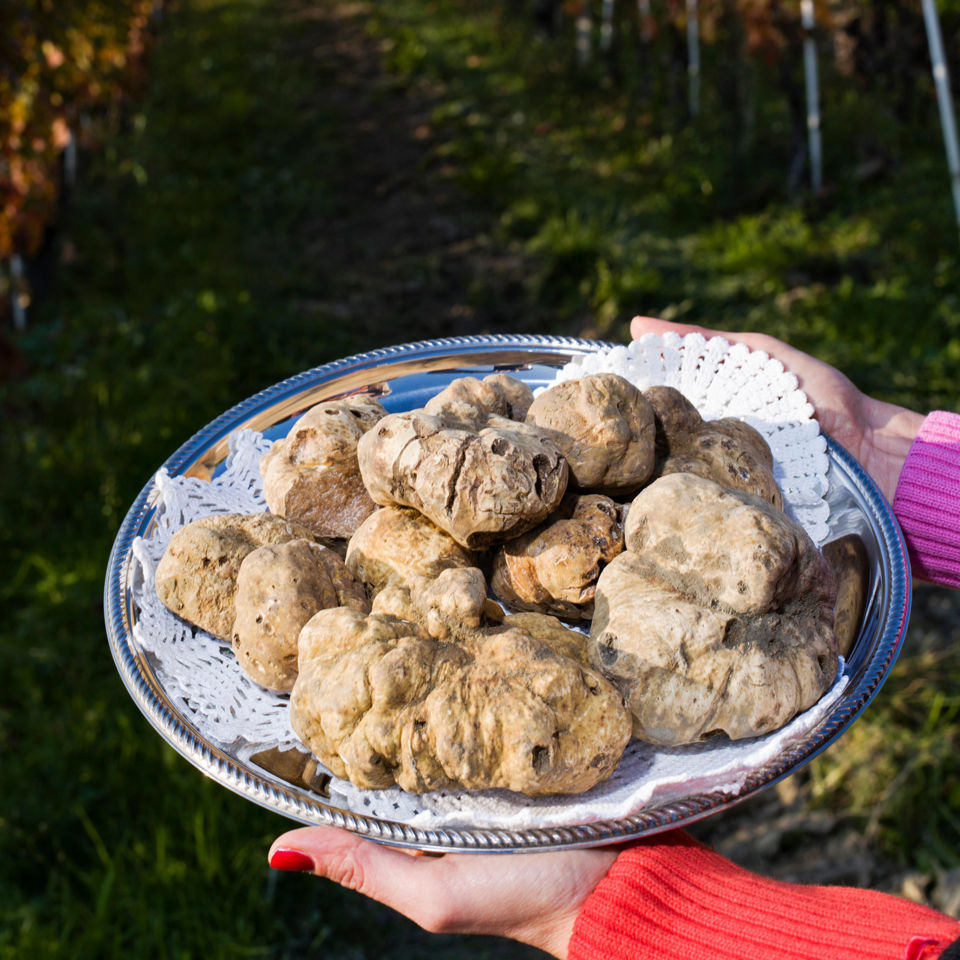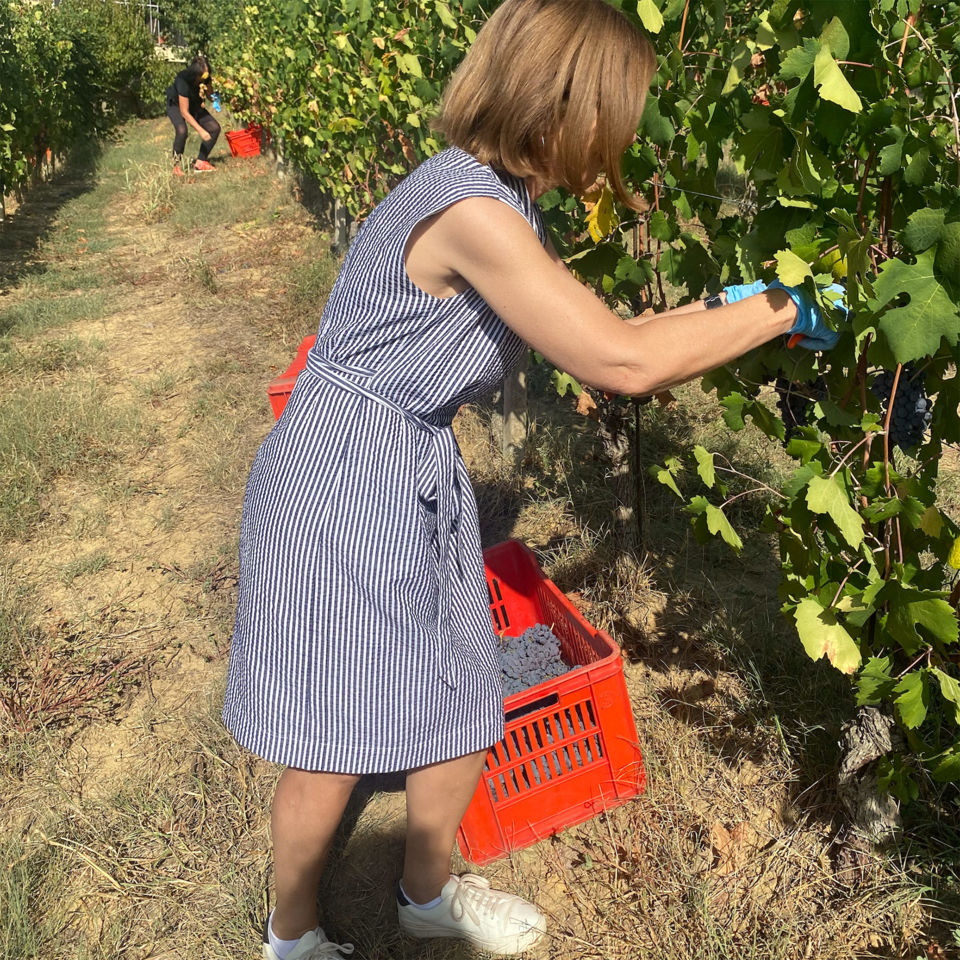Travel
Travel review: Piedmont
by Melanie Leyshon

A small town in north-west Italy is home to hazelnut desserts, bold wines and the rarest white truffles.
The hot late-September sun greets us when we arrive in Piedmont for what turns out to be a heady four-day gastronomic break. We’re in Alba, north-west Italy, a small town between the famous Barolo and Barbaresco wine areas that delivers a hedonistic experience way above its modest size. Go between September and December and you’ve landed in the epicentre of white truffle trading. The season for hunting this highly prized and highly priced aromatic tuber – it’s not a mushroom – kicks off at the stroke of midnight on 21 September. There’s even a gala dinner, hunting dogs invited, to celebrate the event.
From this time, the licensed hunters get the green light to unearth the special species of white truffle, tuber magnatum, that grows here and is considered superior to all others. It’s eye-wateringly expensive: €400 to €600 for 100g of white truffle, compared with €80 to €100 for black. Big bucks – and that’s why it’s called white gold. During the season, the truffle hunters come into Alba once a week to sell to restaurant owners and locals, who mull over the quality before the bartering begins. For visitors, it’s a more relaxed affair, as you can taste white truffle with regional dishes in the many excellent restaurants around town. A highlight of any trip to Piedmont must be a truffle hunt with a registered trifulau (truffle hunter). We head to La Casa del Trifulau, a small holding with a private forest, owned by brothers Natale and Giorgio Romagnolo. Their late father was a hunter, and it’s become a passion for the next generation, says Natale, who had a long and successful career in marketing before moving back to the family home.

Our two-hour daytime hunt starts with an entertaining and informative talk by Natale. We learn that truffles flourish under lime, willow, oak and poplar trees, and it’s their strong aroma that attracts animals, such as squirrels, foxes and mice, that spread the spores and encourage their reproduction. The hunting dogs are trained from puppies for four years to learn how to detect the truffle scent. On the hunt, the dogs are carefully monitored, so they don’t damage the delicate goods as they start frantically digging.
This is a serious and lucrative business for licensed hunters, who go out for three and four hours at night. In the dark, the dogs are less distracted and it’s easier to cover your tracks and hide the location of truffle digs. Lizzy, the dog that accompanies us on our trip, scores a double whammy by finding a 13g white truffle and 38g black truffle in under 20 minutes. Back at La Casa, we enjoy a special rustic lunch of white truffle with creamy soft cheese and local wines. Natale shares cookery advice as we tuck in. You don’t cook the aromatic white truffle but savour its precious scent by shaving raw wafer-thin slices on to hot dishes, especially over eggs, risotto or a simple pasta.
How do you follow a truly one-off experience? By hitting the bottle, naturally. In the Langhe-Roero hills, a Unesco World Heritage site, we visit the Pelassa Winery at Monta d’Alba. It’s reached via a patchwork of vineyards and hazelnut groves, interspersed with forests and fairytale castles. A familiar pattern you’ll find across Piedmont. This is where I get to tick a wine harvest off my bucket list. We’re picking nebbiolo, the noblest of grapes that makes Barolo and Barbaresco wines. It’s simple – select, snip and gently pack bunches into a box – but it takes stamina. After picking enough bunches for one bottle, owner Daniele takes us on a tour of the new winery. We cool down in the deep cathedral-like cellars, where the wines are fermented and matured. Upstairs, the shop is modern and airy. Back in the 1960s, Daniele’s late father, Mario, had a winery a few miles away and delivered his red wine samples to potential customers by Moto Guzzi motorcycle. Now Pelassa ships wines all over the world.

First, we try a dry sparkling white wine made from local arneis grapes. It’s called La Rena, after the long hot summers. It’s refreshingly crisp and dry and a contrast to the renowned Piedmont fizz, Moscato d’Asti, which is sweet, lower in alcohol and delicious as an aperitif. The Pelassa reds range from young and bright, such as Mario’s Pelassa, to the more complex and oak- matured Barolo Riserva, made from 100% nebbiolo.
You’re never far from a vineyard or enoteca (wine bar) in Piedmont. Just north-east of Alba is Neive, one of Italy’s prettiest villages, which has plenty of bars and restaurants serving wines made from the grapes of the area. Only a short drive from here is the must-see medieval Barbaresco Tower, which has been restored with an outside glass lift that whizzes you up to the top. You can take wine tastings on the rooftop terrace with 360-degree views, while interior spaces offer a spot of history and culture. Our visit coincided with the ‘Andy in Langa’ exhibition, featuring some of Andy Warhol’s’ famous screen prints.
Back on the ground, we lunch at the nearby Ristorante Antica Torre. It’s well known for its top-notch versions of the region’s classic dishes. Its traditional set menu includes tondino di vitello (veal with a tuna sauce), insalata russa (a Russian potato, carrot and egg salad), a rich meat ragu with egg pasta, and chocolate or hazelnut desserts – think ice cream, panna cotta and a chocolate and nut ‘salami’. Eat al fresco under the olive trees and you may even see that day’s grape harvest being sorted and then crushed in large presses on trucks out on the street. If you’ve got time, it’s worth going food shopping in Alba. Tartufi Morra at Piazza Pertinace sells all things truffle. For hazelnuts, the region’s other main crop, go to Altalanga on Corso Italia to buy them toasted and salted (a taste revelation) and in cakes. You’ll find gianduiotto – the local gold-wrapped cocoa and hazelnut ingot-shaped chocolates – everywhere.
Of course, there’s no need to stock up on Alba’s other famous praline products – Ferrero Rocher and Nutella. Wherever you venture in this region, there’s great local food and wine and a more leisurely pace of life. Time to slow down, anyone?
How to book
Melanie stayed at Hotel Calissano, Alba, which has classic rooms (from £134 based on two sharing) and apartments with kitchens. A buffet breakfast is included. Visit hotelcalissano.com.
La Casa del Trifulau runs white truffle trips from October to December (€65 per person) and black truffle trips from May to September (€45 per person). Visit lacasadeltrifulau.it.
A Langhe & Roero Wine Tasting Experience at Pelassa Winery starts from €50 per person. Visit pelassa.com. For more information on the region, visit visitpiemonte.com.












